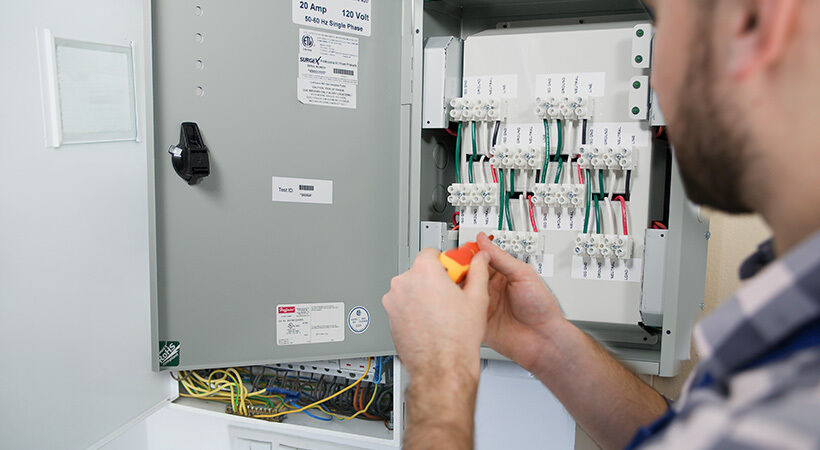Jeff Mackey, senior sales engineer at SurgeX looks at the crucial role of remote power quality monitoring.
As businesses strive to return to the workplace, employers are rising to meet the demand for exceptional employee experiences. Businesses are investing heavily in new enterprise technology including collaboration tools, high-speed networks, automation, and hardware, to create efficient and reliable work environments.
Yet, amidst all these advancements, one often underestimated element remains critical to the sustainability and performance of these systems – power quality. Voltage sags, surges, and harmonic distortions are silent threats to these investments, potentially causing severe damage.
Power quality is crucial for business continuity, and comprehensive power management systems are essential. To provide an exceptional experience in the workplace, high-quality power is essential, even for the smartest and most innovative workplaces.
The unstable nature of power quality
Power quality is unpredictable, constantly threatening technology investments if not closely monitored and managed. Factors like heavy grid dependence, high-power appliances, local electrical noise, and weather conditions can lead to erratic power performance. Despite the erratic nature of power, it’s essential to stop power quality problems before they degrade, damage, or even destroy technology.
The first line of defense against power quality issues is to specify the right solutions. No two buildings have the same power demands. Factors such as the age of the building, geographics and infrastructure, electricity draw, and more can impact the stability and reliability of a power supply. Building managers can support their employees or tenants by opting for a power quality analysis, often performed by an integrator over weeks or months to identify patterns of power risks.
Once the power problems are identified, building managers can work with their integrator to determine which power quality solution best suits the needs of their space. This can include devices providing protection against anomalies at the branch circuit level, surge protection or elimination, power distribution and sequencing solutions for toggling and reboots, uninterruptable power supplies, power conditioners, isolation transformers, battery backups, and more.
Getting the right solutions in place is essential for power quality assurance, but even the most advanced protective measures can still leave room for error. Remember – power quality is erratic; it can change at any moment or require action, even with ironclad defense in place. And it’s not always easy to identify what type of power quality problem caused an interruption.
Cloud-based power management: a must-have for smart building success
This is where power quality monitoring comes into play, and why cloud-based management can be the key to the longevity of workplace technologies. Effective power quality devices are constantly working to combat anomalies. However, monitoring software is equally important as it provides detailed analytics into the power quality of smart buildings. By identifying patterns, problems, and interruptions that are most likely to affect connected technologies, integrators and managers can leverage actionable data to eliminate and prevent such issues in the long term.
Facility managers and integrators cannot be on-site and monitoring power 24/7 without incurring significant costs. However, cloud-based power quality monitoring can help them address issues before they cause disruptions. With IP-enabled power management software, technology teams can access the monitoring system from anywhere with Wi-Fi connectivity. This software allows them to identify and address recurring power issues, reducing the need for truck rolls, reducing time spent troubleshooting, and minimizing downtime. This benefits all parties, saving significant time and costs for businesses, facility managers, and integrators.
Monitoring systems that track power events and measure crucial metrics such as crest factor, power factor, neutral-to-ground voltage, and line frequency can provide valuable insights. These insights help with informed decision-making and prompt issue resolution. Modern software may also offer automated resolution to ensure that any issues detected are corrected immediately without any intervention from the user or integrator. Thanks to cloud-enabled monitoring and diagnostic solutions, it is now possible to identify the root cause of issues in real time using actionable insights and observable trends. This helps integrators make informed decisions and resolve issues promptly, ultimately reducing the risk of misdiagnosis.
Regardless of which specific power management solutions are involved, remote monitoring and resolution are essential components of a reliable power foundation for any connected environment. With third-party integrations and innovative fleet management solutions, integrators can remotely monitor and manage power environments, regardless of the project's scale.
Connect with an integration expert to explore your power management needs and how remote monitoring solutions can help you stay one step ahead of power anomalies.

